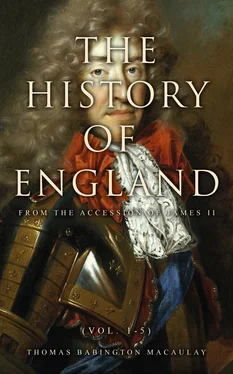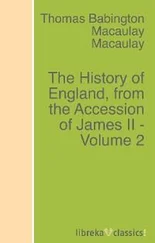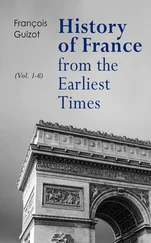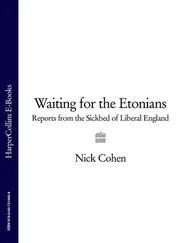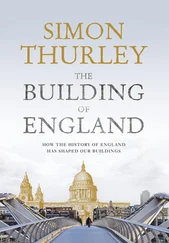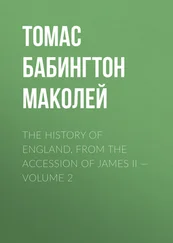261.Memoirs of the Life of Thomas Marquess of Wharton, 1715.
262.See the Guardian, No. 67; an exquisite specimen of Addison's peculiar manner. It would be difficult to find in the works of any other writer such an instance of benevolence delicately flavoured with contempt.
263.The Observator, April 4, 1685.
264.Despatch of the Dutch Ambasadors, April 10-20, 1685.
265.Burnet, i. 626.
266.A faithful account of the Sickness, Death, and Burial of Captain Bedlow, 1680; Narrative of Lord Chief Justice North.
267.Smith's Intrigues of the Popish Plot, 1685.
268.Burnet, i. 439.
269.See the proceedings in the Collection of State Trials.
270.Evelyn's Diary, May 7, 1685.
271.There remain many pictures of Oates. The most striking descriptions of his person are in North's Examen, 225, in Dryden's Absalom and Achitophel, and In a broadside entitled, A Hue and Cry after T. O.
272.The proceedings will be found at length in the Collection of State Trials.
273.Gazette de France May 29,/June 9, 1685.
274.Despatch of the Dutch Ambassadors, May 19-29, 1685.
275.Evelyn's Diary, May 22, 1685; Eachard, iii. 741; Burnet, i. 637; Observator, May 27, 1685; Oates's Eikvn, 89; Eikwn Brotoloigon, 1697; Commons' Journals of May, June, and July, 1689; Tom Brown's advice to Dr. Oates. Some interesting circumstances are mentioned in a broadside, printed for A. Brooks, Charing Cross, 1685. I have seen contemporary French and Italian pamphlets containing the history of the trial and execution. A print of Titus in the pillory was published at Milan, with the following curious inscription: "Questo e il naturale ritratto di Tito Otez, o vero Oatz, Inglese, posto in berlina, uno de' principali professor della religion protestante, acerrimo persecutore de' Cattolici, e gran spergiuro." I have also seen a Dutch engraving of his punishment, with some Latin verses, of which the following are a specimen:
"At Doctor fictus non fictos pertulit ictus
A tortore datos haud molli in corpore gratos,
Disceret ut vere scelera ob commissa rubere."
The anagram of his name, "Testis Ovat," may be found on many prints published in different countries.
276.Blackstone's Commentaries, Chapter of Homicide.
277.According to Roger North the judges decided that Dangerfield, having been previously convicted of perjury, was incompetent to be a witness of the plot. But this is one among many instances of Roger's inaccuracy. It appears, from the report of the trial of Lord Castlemaine in June 1680, that, after much altercation between counsel, and much consultation among the judges of the different courts in Westminster Hall, Dangerfield was sworn and suffered to tell his story; but the jury very properly gave no credit to his testimony.
278.Dangerfield's trial was not reported; but I have seen a concise account of it in a contemporary broadside. An abstract of the evidence against Francis, and his dying speech, will be found in the Collection of State Trials. See Eachard, iii. 741. Burnet's narrative contains more mistakes than lines. See also North's Examen, 256, the sketch of Dangerfield's life in the Bloody Assizes, the Observator of July 29, 1685, and the poem entitled "Dangerfield's Ghost to Jeffreys." In the very rare volume entitled "Succinct Genealogies, by Robert Halstead," Lord Peterbough says that Dangerfield, with whom he had had some intercourse, was "a young man who appeared under a decent figure, a serious behaviour, and with words that did not seem to proceed from a common understanding."
279.Baxter's preface to Sir Mathew Hale's Judgment of the Nature of True Religion, 1684.
280.See the Observator of February 28, 1685, the information in the Collection of State Trials, the account of what passed in court given by Calamy, Life of Baxter, chap. xiv., and the very curious extracts from the Baxter MSS. in the Life, by Orme, published in 1830.
281.Baxter MS. cited by Orme.
282.Act Parl. Car. II. March 29,1661, Jac. VII. April 28, 1685, and May 13, 1685.
283.Act Parl. Jac. VII. May 8, 1685, Observator, June 20, 1685; Lestrange evidently wished to see the precedent followed in England.
284.His own words reported by himself. Life of James the Second, i. 666. Orig. Mem.
285.Act Parl. Car. II. August 31, 1681.
286.Burnet, i. 583; Wodrow, III. v. 2. Unfortunately the Acta of the Scottish Privy Council during almost the whole administration of the Duke of York are wanting. (1848.) This assertion has been met by a direct contradiction. But the fact is exactly as I have stated it. There is in he Acta of the Scottish Privy Council a hiatus extending from August 1678 to August 1682. The Duke of York began to reside in Scotland in December 1679. He left Scotland, never to return in May 1682. (1857.)
287.Wodrow, III. ix. 6.
288.Wodrow, III. ix. 6. The editor of the Oxford edition of Burnet attempts to excuse this act by alleging that Claverhouse was then employed to intercept all communication between Argyle and Monmouth, and by supposing that John Brown may have been detected in conveying intelligence between the rebel camps. Unfortunately for this hypothesis John Brown was shot on the first of May, when both Argyle and Monmouth were in Holland, and when there was no insurrection in any part of our island.
289.Wodrow, III. ix, 6.
290.Wodrow, III. ix. 6. It has been confidently asserted, by persons who have not taken the trouble to look at the authority to which I have referred, that I have grossly calumniated these unfortunate men; that I do not understand the Calvinistic theology; and that it is impossible that members of the Church of Scotland can have refused to pray for any man on the ground that he was not one of the elect.—— I can only refer to the narrative which Wodrow has inserted in his history, and which he justly calls plain and natural. That narrative is signed by two eyewitnesses, and Wodrow, before he published it, submitted it to a third eyewitness, who pronounced it strictly accurate. From that narrative I will extract the only words which bear on the point in question: "When all the three were taken, the officers consulted among themselves, and, withdrawing to the west side of the town, questioned the prisoners, particularly if they would pray for King James VII. They answered, they would pray for all within the election of grace. Balfour said Do you question the King's election? They answered, sometimes they questioned their own. Upon which he swore dreadfully, and said they should die presently, because they would not pray for Christ's vicegerent, and so without one word more, commanded Thomas Cook to go to his prayers, for he should die.—— In this narrative Wodrow saw nothing improbable; and I shall not easily be convinced that any writer now living understands the feelings and opinions of the Covenanters better than Wodrow did. (1857.)
291.Wodrow, III. ix. 6. Cloud of Witnesses.
292.Wodrow, III. ix. 6. The epitaph of Margaret Wilson, in the churchyard at Wigton, is printed in the Appendix to the Cloud of Witnesses;
"Murdered for owning Christ supreme
Head of his church, and no more crime,
But her not owning Prelacy.
And not abjuring Presbytery,
Within the sea, tied to a stake,
She suffered for Christ Jesus' sake."
293.See the letter to King Charles II. prefixed to Barclay's Apology.
294.Sewel's History of the Quakers, book x.
295.Minutes of Yearly Meetings, 1689, 1690.
296.Clarkson on Quakerism; Peculiar Customs, chapter v.
297.After this passage was written, I found in the British Museum, a manuscript (Harl. MS. 7506) entitled, "An Account of the Seizures, Sequestrations, great Spoil and Havock made upon the Estates of the several Protestant Dissenters called Quakers, upon Prosecution of old Statutes made against Papist and Popish Recusants." The manuscript is marked as having belonged to James, and appears to have been given by his confidential servant, Colonel Graham, to Lord Oxford. This circumstance appears to me to confirm the view which I have taken of the King's conduct towards the Quakers.
Читать дальше
